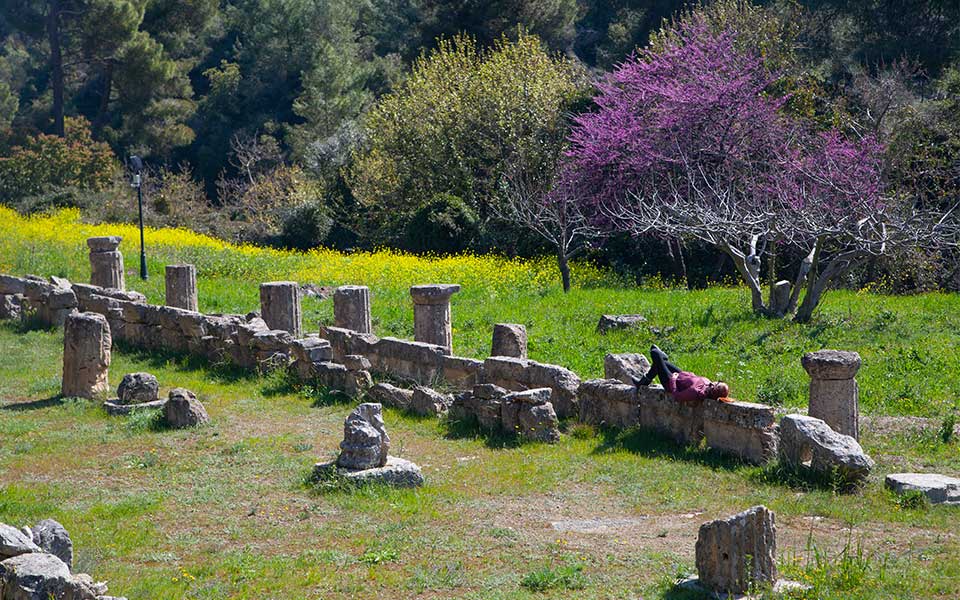Imagine standing in an ancient grove, the wind stirring the leaves above, their hushed whispers carrying divine messages. For the ancient Greeks, oracles were more than sacred sites – they were portals to the gods, shaping decisions on everything from war and governance to personal dilemmas. While Delphi and its famed Pythia (high priestess) remain legendary, many other oracles across the Greek world held immense sway over human affairs, their voices echoing through time.
From the rustling oak of Dodona in the northwest to the dream-filled sanctuary of Amphiaraus near Oropos, these lesser-known sites offered guidance to both kings and commoners. Some, like the oracle of Trophonius in Boeotia, were shrouded in mystery, leaving seekers pale and shaken after chilling, subterranean visions. Others, such as Claros and Didyma in Asia Minor, carried Apollo’s prophecies to the farthest reaches of the Greek world. Though their voices have long fallen silent, their ruins still stand – a testament to an age when fate was deciphered through signs, symbols, and arcane rituals.
Step beyond Delphi and explore the hidden realms of ancient Greek prophecy, where the gods spoke in whispers, dreams, and enigmatic signs.
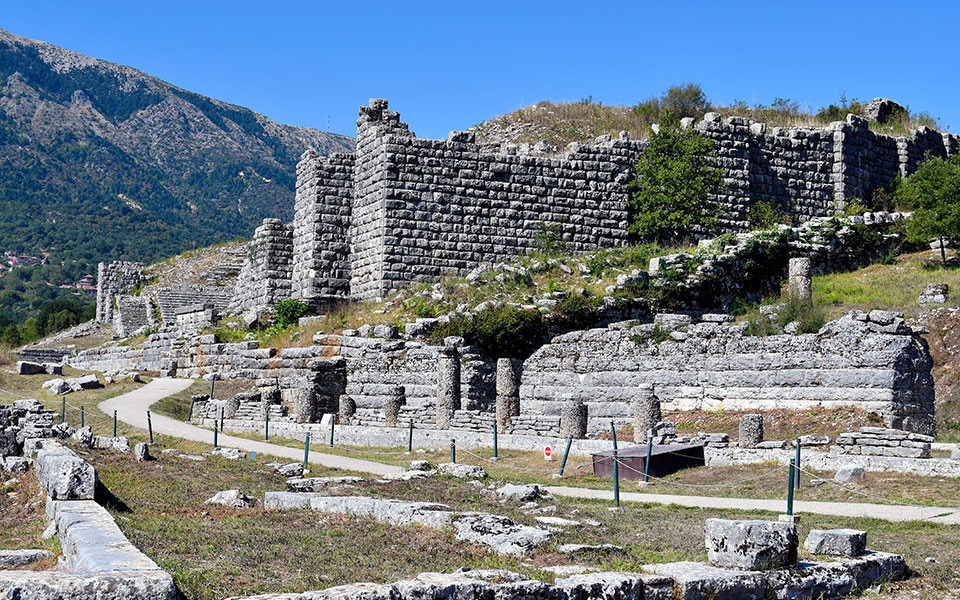
© Shutterstock
The Oracle of Dodona: The Whispering Oak
Tucked away in the remote mountains of Epirus, the oracle of Dodona is the oldest in Greece, predating even Delphi and possibly dating back to the second millennium BC. Unlike the trance-induced prophecies of the Pythia at Delphi, Dodona’s divine messages came from nature itself – whispered through the rustling leaves of a sacred oak. Priests, and later the Peleiades, a group of prophetic women, interpreted these murmurs as the voice of Zeus Naios (“god of spring”) and Dione (associated with the mother goddess Gaia), the two deities venerated at the sanctuary.
The origins of Dodona are steeped in mystery. The earliest mention of the site appears in Homer (8th century BC), who describes its priests, the Selloi, as having unwashed feet and sleeping on the ground. Herodotus (2.54–57) recounts a legend that the oracle was founded by an Egyptian priestess who journeyed to Epirus. Writing in the second century AD, the Greek geographer Pausanias (10.12.10) elaborates:
“The prophetesses, called the Peleiades, interpret the will of Zeus, saying that his words are spoken through the murmuring of the oak.”
In its prime, Dodona was a powerful center of divination, second only to Delphi in prestige, drawing both rulers and ordinary supplicants. The Spartans, Athenians, and Pyrrhus of Epirus all sought Zeus’s wisdom here. Pilgrims would offer sacrifices, inscribe questions on lead tablets, and await divine responses carried by the wind and sounds of nature. Another striking practice involved bronze cauldrons (known as “Dodonaean bronze”), which, when struck, produced harmonic vibrations believed to carry Zeus’s messages.
Though the original sacred oak has long vanished (another was planted in its place in the 1950s), Dodona remains a site of quiet reverence. The ruins of public buildings, colonnades, and the ancient theater – one of the largest in Greece – still evoke a sense of mystery. Standing among these weathered stones, one can almost hear the faint echoes of the past, where Zeus once spoke through the wind.
For more information on this remarkable site, click here.
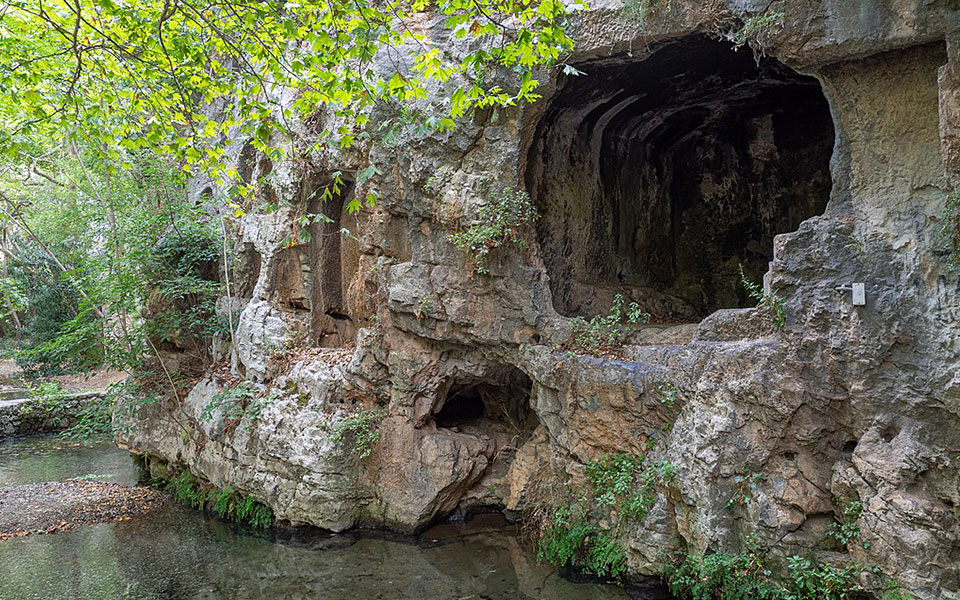
The Oracle of Trophonius: Descent into Darkness
If Dodona’s oracle was one of serene whispers, Trophonius’s was its unsettling opposite. Hidden in a deep chasm near Livadeia, Boeotia, this oracle was dedicated to Trophonius, a shadowy chthonic figure said to have built Apollo’s temple at Delphi. Seeking prophecy here was no simple act – it was an ordeal that tested the courage and resolve of all who entered.
According to Pausanias (9.39), the process began with strict purification rituals, including eating sacrificial meat and bathing in the sacred River Herkyna. Supplicants also made offerings to Trophonius and other deities, including Cronos, Apollo, and Zeus, ensuring their spiritual readiness. Only after these rites could they descend into the subterranean chamber, where the revelation awaited.
Unlike other oracles, no priest or prophetess conveyed the god’s words. Instead, seekers experienced personal visions in the darkness – often overwhelming, cryptic, and deeply transformative. Many emerged terrified, some suffering total memory loss. Pausanias (9.39.5) provides a chilling firsthand account:
“He who consults the oracle must first purify himself, then descend into the chasm where he will receive the response not by voice but by a revelation of the soul.”
This eerie reputation made Trophonius’s oracle one of the most mysterious in Greece, attracting heroes, philosophers, and statesmen in search of divine wisdom. The phrase “to descend into the cave of Trophonios” became proverbial for experiencing great fear, as referenced in Aristophanes’ comedy “Clouds.”
Though the sanctuary fell into decline, remnants of the oracle and the entrance to the cavern still survive. Today, visitors to Livadeia can explore the site and visit the archaeological museum in nearby Chaeronea, where excavated artifacts shed light on the oracle’s enigmatic practices. Even without descending into the depths, the dramatic cliffs, lush valleys, and flowing waters of the Herkyna River make for an atmospheric journey into Greece’s ancient past.
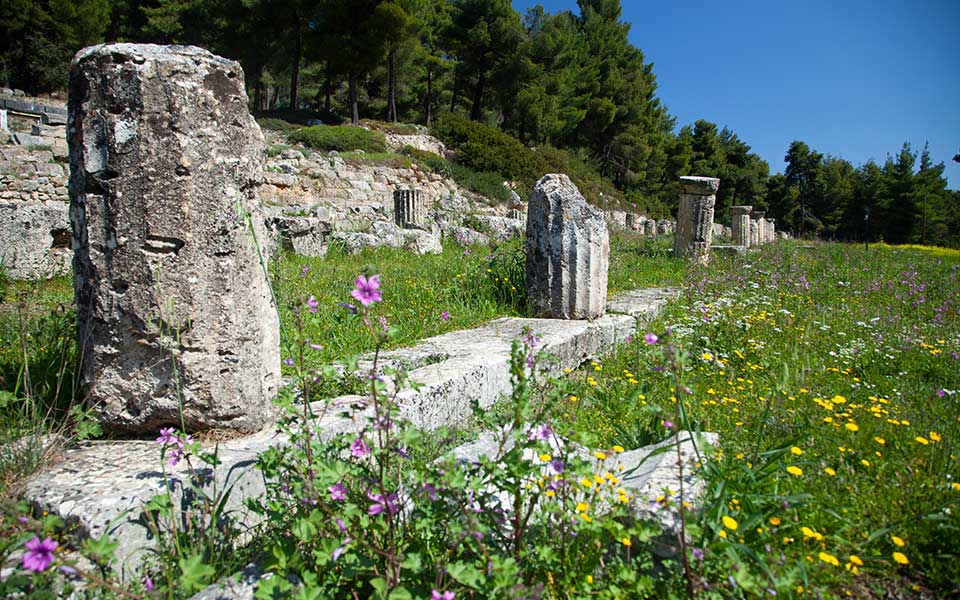
© Olga Charami
The Oracle of Amphiaraus: Healing and Dreams
Tucked away in Oropus, northeast Attica, lies the sanctuary of Amphiaraus, a hero-prophet who, according to legend, was swallowed by the earth and deified. Unlike the cryptic and unsettling visions of Trophonius, the oracle of Amphiaraus offered a gentler path to divine revelation – through dreams.
Functioning as both a healing center and a prophetic site, the sanctuary attracted the sick and troubled, who sought relief from ailments or guidance in personal matters. Upon arrival, visitors underwent purification rituals, including ritual bathing in the sacred spring, abstaining from certain foods, and offering sacrifices to Amphiaraus and other deities. After these preparations, they would engage in incubation – sleeping on the temple floor in hopes of receiving divine messages in their dreams. Pausanias (1.34.4) describes the process:
“Those seeking prophecy must spend a night within the temple, where the god reveals his will through visions in sleep.”
Healing and divination were deeply intertwined, with supplicants receiving symbolic dream visions later interpreted by priests. By the 4th century BC, the oracle’s reputation for miraculous cures made it one of the most esteemed healing sanctuaries in Greece, akin to the famous sanctuaries of Asclepius. Inscriptions discovered at the site record testimonies of those who claimed to have been cured after their visionary experiences.
Today, the ruins of the temple, a well-preserved theater, altars, and the sacred spring still stand, offering visitors a glimpse into the mystical world of dream prophecy.
For our own in-depth guide to the Amphiareion of Oropos, less than an hour northeast of Athens, click here.
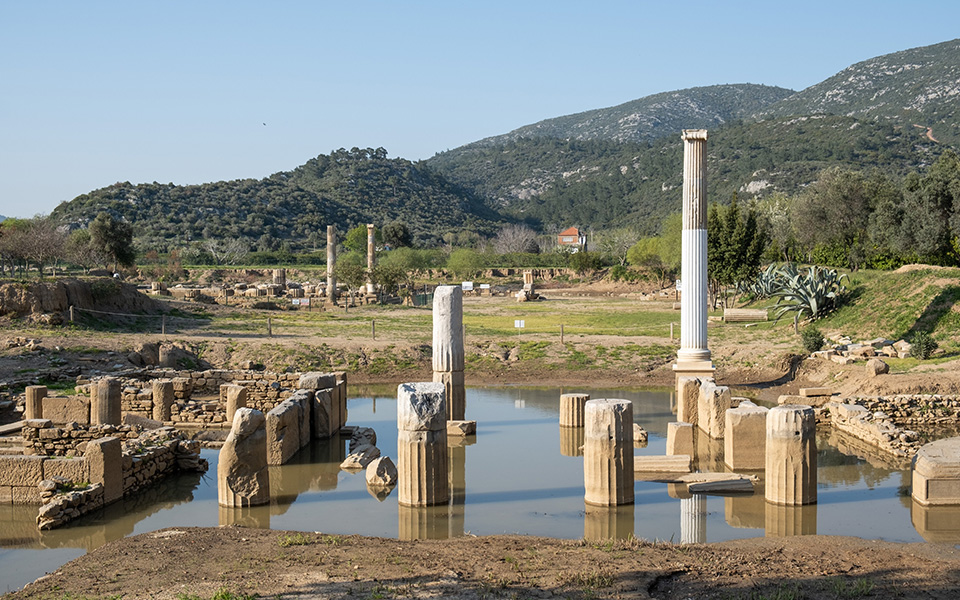
© Shutterstock
Other Notable Oracles: Apollo’s Voice in Ionia
Far beyond the Greek mainland, in Ionia – the western coast of modern-day Turkey, home to some of antiquity’s most vibrant Greek cities – two of Apollo’s most prestigious oracles flourished: Claros and Didyma. These sanctuaries, deeply intertwined with the religious and political affairs of the Ionian world, served as gateways to divine wisdom, consulted by both local city-states and distant rulers.
Near Colophon, not far from Ephesus, Claros (Klaros) was renowned for its male oracle, a stark contrast to the priestesses of Delphi. The prophet, always chosen from a hereditary priestly family, prepared for divination by drinking from a sacred subterranean spring, believed to induce a trance-like state. His responses, often delivered in elevated, poetic verses, were filled with cryptic symbolism and required interpretation. The oracle at Claros was particularly influential during the Hellenistic and Roman periods, drawing inquiries from across the eastern Mediterranean. Every five years, the sanctuary hosted games in honor of Apollo.
Today, the ruins of Claros reveal the well-preserved remains of a maze-like adyton (which housed the cult statue) beneath the Temple of Apollo. The site still preserves its sacred spring and inscriptions recording past prophecies. Visitors can walk the same paths as ancient seekers of Apollo’s wisdom, immersing themselves in the echoes of a once-revered oracle.
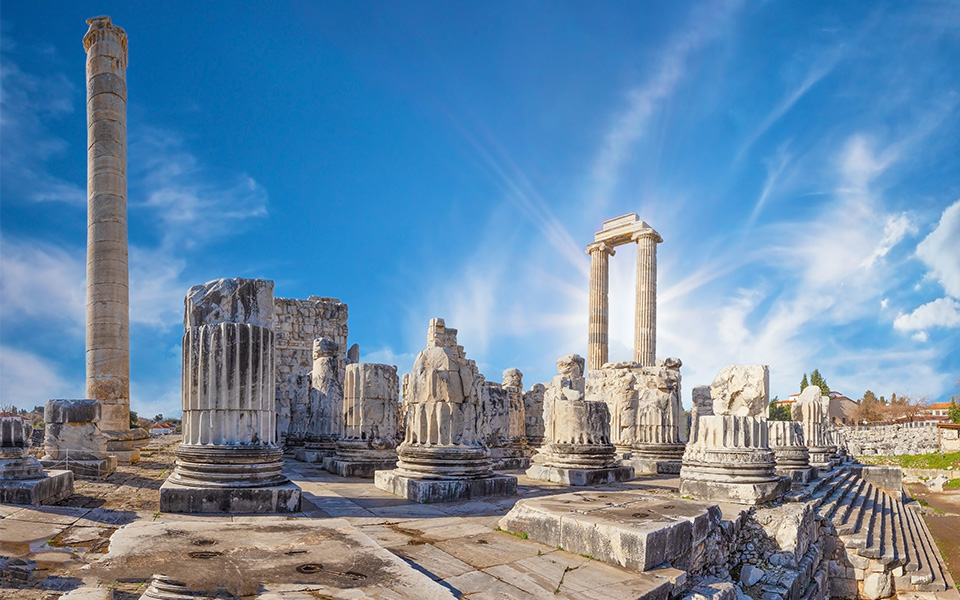
© Shutterstock
Further south, near the great city of Miletus, lay the oracle of Didyma, home to the massive Temple of Apollo, second in size only to the Temple of Artemis at Ephesus. Unlike Claros, Didyma’s oracle was female, and, like the Pythia at Delphi, she would enter a mystical state to relay Apollo’s will. Pilgrims from across the Greek and Roman world journeyed here along a sacred way, lined with statues and monuments, to seek divine guidance. Even Alexander the Great consulted the oracle, underscoring its geopolitical and religious significance.
Today, some of the soaring columns of Didyma’s Temple of Apollo still stand, reaching an astonishing 20 meters in height. The site’s ornate carvings, sacred passageways, and partially preserved oracle chamber offer visitors a glimpse into its once-magnificent past, making it one of the most impressive and accessible oracular sites from antiquity. Of particular interest is a monumental Medusa head, once part of the temple’s frieze.
Both Claros and Didyma were integral to Greek religious life, reinforcing Apollo’s enduring role as the god of prophecy. Though their divine voices have long fallen silent, their ruins remain – awe-inspiring testaments to an age when the Olympian gods spoke, and mortals listened.
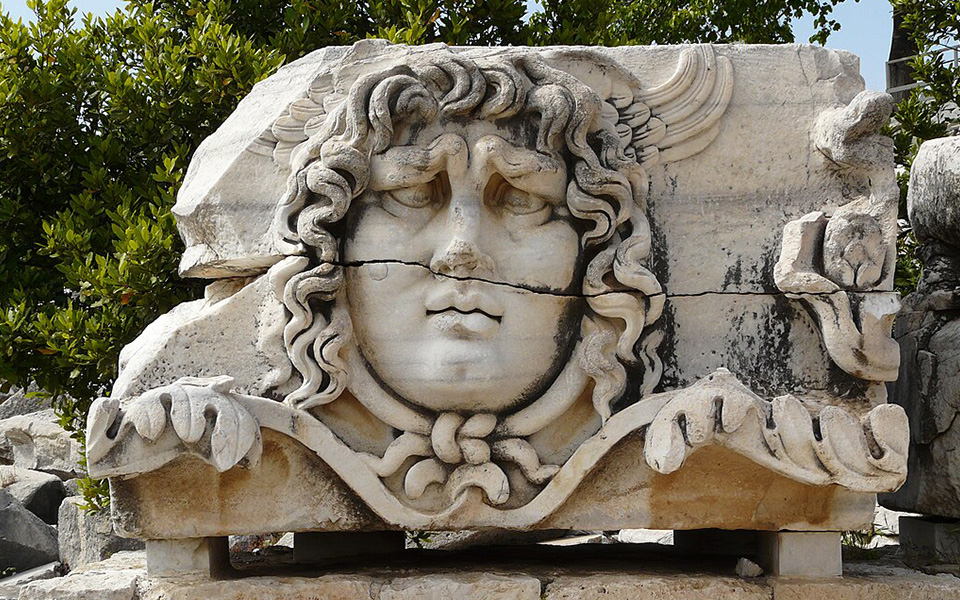
The Legacy of Oracles in Greek Thought
Oracles were far more than mere fortune-tellers – they were divine intermediaries, shaping wars, political alliances, and personal destinies. To the ancient Greeks, these sacred sites were proof of the gods’ active presence in human affairs, reinforcing a deep-rooted belief in fate and divine will.
As Greek philosophy evolved, Socrates, Plato, and later thinkers questioned the nature of prophecy, shifting the focus from divine revelation to human reasoning. Yet, the impulse to seek signs and guidance from the universe remains universal. From interpreting dreams to searching for omens in nature, humanity has never ceased looking for meaning beyond the tangible world.
Today, these oracular sites are more than silent ruins – they remain places of profound atmosphere, where the echoes of ancient rituals still linger. So, why not go beyond Delphi? Step into these lesser-known sanctuaries, where the winds, waters, and stones once carried divine messages.

